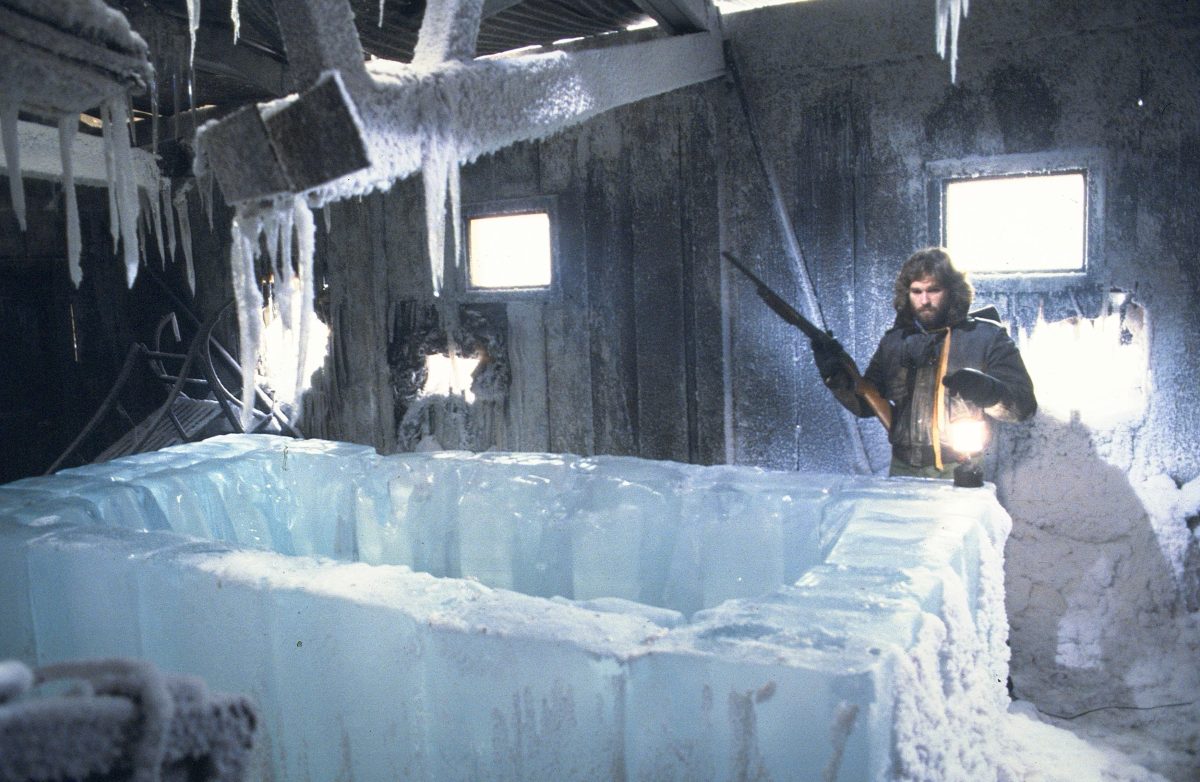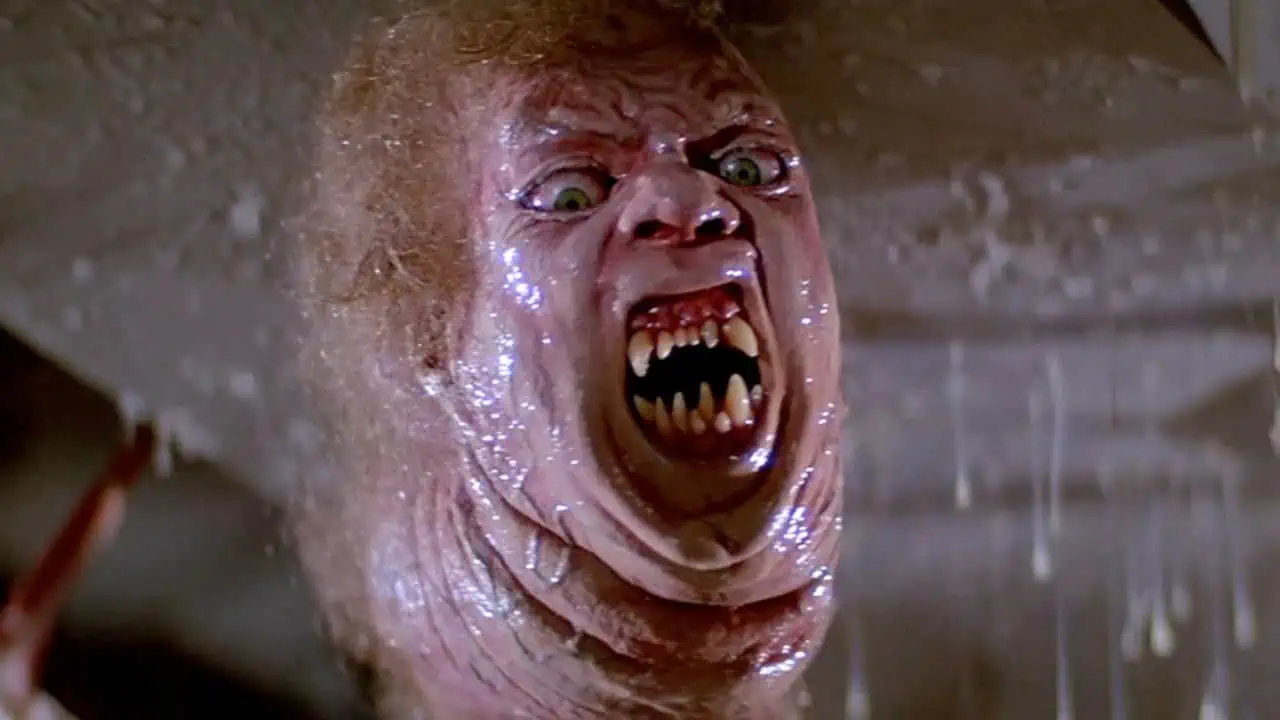When I first watched John Carpenter’s “The Thing” (1982) at the age of 12, I was terrified that I couldn’t even look at my dog for a few days. It was not just because of the grotesque visual effects depicted in the film, but also because of a strong sense of paranoia that the film had created within me. Even though that irrational fear didn’t last forever, I realised how powerful a cinema can be. Through the craft of storytelling and visuals, a film can reshape the way you perceive the world around you.
Years later, when I sat down to watch the film again, that fear had been dulled completely, but it made me ask various questions that didn’t come to my mind when I was just a kid. John Carpenter’s “The Thing” has achieved cult recognition over these decades. Despite being a flop at the box office at the time of its release, the film stayed in the audience’s mind for a long time and is still relevant now. But what can be the reason behind it? What makes this particular horror film a timeless movie that people are still talking about? Is it just because of the out-of-the-box CGI used at that time or because of the commentary the maker wanted to make through this film?
In this explainer, I’ll revisit “The Thing” (1982) and discuss all of the aspects that make this movie a cult classic horror movie.
The Thing (1982) Plot Summary & Movie Synopsis:
Set against the backdrop of Antarctica’s vast, frozen wilderness, the story follows a team of American researchers stationed at a remote outpost, where isolation and the unforgiving environment shape every moment of their unfolding journey. A helicopter with a group of Norwegian scientists arrives near the station, chasing a dog, trying to shoot it. An explosion takes them out, leaving the dog free. Chaos stirs in the outpost of the Americans, who are clueless as to why the Norwegians would want to attack them. So the team leader, helicopter pilot R. J. MacReady (played by Kurt Russell), begins to dig deep to find what brought the Norwegians here, as well as the reason for them wanting to kill an innocent dog.
MacReady, with the camp doctor, Blair (played by Wilford Brimley), discovers a nearby Norwegian camp where they also find a grotesquely mutilated and burnt corpse of a human. They bring the corpse to their station and immediately perform an autopsy on it. Meanwhile, on that night, when the dogwatcher, Clark, put the dog inside a shelter with the rest, an unimaginable event occurs, unsettling everyone in the station. The dog turns into a ghastly, mutilating species that spreads its tentacles around other dogs to swallow them. As Clark and others notice this unsettling event, they set the dog ablaze to get rid of it. But in that process, almost all of their dogs are killed.
How does “The Thing” spread through Humans and what are its Effects?

The camp doctor, Blair, performs the autopsy on both these subjects (the Norwegian corpse and the dog). After a laborious session, he concludes that this is an alien species, with an intruding mechanism that attacks any kind of living being on Earth, imitating them perfectly before launching another attack. That’s how it spreads through the mortal beings, making a community of its own. So it is possible that not only the dog, but this thing has already been spread through the other researchers in the camp, especially Clark, the one who watches the dog.
Blair’s paranoia begins to isolate him from the fellow researchers, and gradually, everyone in the camp gets affected by it. MacReady tries to take charge of the situation and closely inspects each of the researchers in the camp. However, he fails to recognise that there is a high chance of Blair being the Thing more than anyone in the camp, because he’s the one who has spent most of the time with these dead bodies, which still had the intruder cells thriving in them.
The Thing (1982) Movie Ending Explained:
Does The Thing Have a Definitive Ending?
Here’s another theory that can emerge, despite it not being explained in the film. This particular alien species could actually exist in more than one form within a single organism, so as they begin imitating the host, they might also imitate its intelligence and make clever decisions. Blair is affected by this entity long before he even realised it, so he intentionally creates chaos in the camp, causing the other researchers to isolate him in a cabin, where he could secretly work on the aliens’ spaceship. Later, when MacReady and his fellow researchers discover the spaceship underground, they have no idea that Blair, taken over by this creature, has been working on it since the beginning.
Also Read: The Thing (1982) Movie Review
Meanwhile, at the camp, as paranoia escalates and conflicts spread among the researchers, MacReady comes up with a solution. He ties up the suspected individuals who could possibly be infected. He has previously seen how, despite being burned, the intruder cells can multiply and form a different organism from the host’s body. So, he decides to take each researcher’s blood sample and apply electricity to it to see if there is any reaction. In this process, some of their innocent friends get killed, not because they are infected, but due to the growing doubt and hatred among them. Eventually, the test is conducted, which identifies intruder cells in Palmer’s blood. But before anyone kills him, Palmer has already infected Windows, causing the two of them to get burned to death by MacReady.
Finally, at the end, only four researchers remain alive: MacReady, Childs, Garry, and Nauls. But when they decide to blow up the entire camp to eliminate the species, Blair gets to Nauls and Garry. After killing them, the creature launches an attack on MacReady, but he manages to destroy it by burning the entire camp down. Later, in the film’s final scene, in front of the burning station, Childs (played by Keith David) joins MacReady. Neither of them knows whether the other is human or a threat in disguise.
But at this point, they are both exhausted and too tired to fight. So, no, the film doesn’t conclude with a definite answer to our question, whether they survive or get killed, but in the concluding scene, the film becomes more human. Both MacReady and Childs let go of their suspicions for once and sit together like two normal humans who have just accepted their fate and play along with it.
The Thing (1982) Movie Themes Analyzed:
The Paranoia, Isolation, and Political Landscape
From the time of its release until today, some of the most prominent themes in this movie have been paranoia, social isolation, and the survival instincts of human beings. However, another underlying theme is John Carpenter’s direct commentary on the political landscape of that era, especially hinting at the ongoing Cold War between the US and the Soviet Union in the 1980s. This was a time when the Cold War and the related political turmoil left everyone in a state of paranoia, causing people to suspect even the most familiar individuals in their surroundings.

The effects of the Cold War have always placed people in catastrophic situations, where one could feel isolated and powerless, just as the American researchers do in the presence of the alien being at their station. It makes them question everything and, most importantly, shatters their trust in one another. In such a vulnerable time, the threat feels even more pronounced, so the helicopter pilot, MacReady, makes brutal decisions to resurrect the lost trust within his team members, at any cost.
Even Antarctica, as the setting of this story, plays a crucial role, almost like a main character in the film. The cold and bleak landscape of Antarctica is enough to perfectly complement the body horror elements, leaving us in a constant state of discomfort and inertia. That’s why, in the end, “The Thing” is not just a horror film about a gruesome, CGI-made alien, but a contemplative piece that needs a deeper reflection.
Why The Thing Still Haunts Us Today: Explaining its cult classic recognition
When “The Thing” was released in 1982, it was a box office flop and a critical failure. Due to its ghastly visual effects and depressing ending, it didn’t reach as much an audience as it could have. Moreover, with the release of “E.T.” around the same time, “The Thing” was somewhat sidelined from the public gaze, and discussions around it didn’t last long. However, it’s all a matter of time, because some films that don’t work well at the time of their release eventually gain relevance with increased exposure. After years of critical re-evaluation, “The Thing” is now considered one of the most influential sci-fi horror films that still inspires the modern generation.
Thanks to Rob Bottin’s creature design, “The Thing” became one of the most memorable and talked-about horror films to date. The design still remains haunting and visceral. Not only the visual effects, but the thematic depth of the film also grew stronger over time, especially after catastrophes like 9/11 and the COVID-19 pandemic, which led to a collapse in trust and bonding among people, making them socially isolated. During these times, viewers begin to relate to the film’s themes more deeply. Many revisit it, not just through VHS rentals or DVD collections, but especially after the meteoric rise of streaming platforms, where new audiences discover it and connect with its bleak tone.
However, with time and multiple rewatches,”The Thing” might not feel exactly the same as it did on first viewing. Still, you can sense its modern relevance in a film made in the early ’80s. Even today, in a world of AIs and deepfakes. where people can be easily misled, we’re reminded of this film and how it masterfully used the theme of distrust to deliver a strong story that continues to resonate with the modern mindset.







